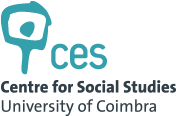Theses defended
Architectural Research Cultures: Lines of thought within research centres, 1945-1974
April 27, 2017
PhD in Architecture
Mário Krüger
The current Thesis aims to problematize the adoption of research in architecture, questioning its reflections upon the profession and the education. For that purpose, it revolves around the time period following the II World War, lined by the prominence given to research, namely in England and the United States of America, due to the acceleration of research by the war and the urgency for reconstruction. It is reflected on how this context has influenced a research culture in architecture that supports the professional practice and which has had its counterpart in the creation of structures dedicated to research, whether or not linked to architecture schools, and whose activities have been translated into different studies contributing to a body of knowledge. This process is considered under the hypothesis that diverse lines of thought are being formulated in those structures, allowing to identify various research cultures in architecture, which are detached as a sign of a post-modernity that was being announced in the architectural practice and also in research. On Part One, "Conjunctures of Architectural Research", it is established a transversal line of thought linked to diverse contexts, guided according to the conjuncture of an objective construction of knowledge. The first chapter goes back to the inter-war period to refer to the early studies under a situation of inflection towards a new objectivity in the Dessau period of the Bauhaus, as well as towards a pragmatic approach by the Vkhutemas, close to the Contemporary Architects Association (OSA). Moving to the second chapter, it is questioned how did the introduction of a modern culture in England, during the 1930s, arise a particular attention to research, right away by the Modern Architectural Research (MARS) Group, with reflections on the Royal Institute of British Architects (RIBA) during the II World War, when an architectural science was envisioned. This period brought along the promotion of research during the 1950s, by a political and economical conjuncture that favoured the transfer of war research to a peace context. This transition would be cherished in the profession by the development of the building industry, to be subsequently transmitted to the teaching, and present in researches, both collective and individual, here conveyed by the examples that distinctively approach research on the architectural and urban form. Consequently, on Part Two, "Structures of Architectural Research", it is focused on the peak of diverse research dedicated structures, motivated by architects or by other professionals. Aiming at identifying distinct research cultures in formation, the first two chapters deepen different approaches led by the Centre for Land Use and Built Form Studies (LUBFS) in Cambridge and by the Institute for Architecture and Urban Studies (IAUS) in New York, both founded in 1967, respectively by Leslie Martin and Peter Eisenman. These cases are the object of a study in regard to their projects and problematics, contributing for an understanding of their specificities, as a demonstration of distinct lines of thought. It is concluded on a divergence of a research culture with an analytical matrix, initially shared by Eisenman in Cambridge, and which has moved in the LUBFS towards a quantitative and deductive approach close to mathematics, and which will be pursued in the IAUS by an inductive approach, near to sociology and semiology. In the last chapter, it is reflected upon the degree of participation of the Portuguese context on diverse research cultures, through the studies developed both in the Centro de Estudos de Urbanismo e Habitação Engº Duarte Pacheco by José Pedro Martins Barata and Duarte Castel-Branco, as well as in the Laboratório Nacional de Engenharia Civil with the coordination of Nuno Portas, where operative intersection points with the lines of thought of the international context were sought, facing the problematics on architecture, the city and the territory. In the final considerations, "Conjectures of Architectural Research", the relevance of the complementarity of the triangle "profession, education and research" is confirmed. According to the previously addressed experiences, when a slip occurred towards any of those vertices, the architectural culture has been left weakened, either by the preservation of the modernist principles in a profession deprived from a corresponding theoretical update, or by taking to the extreme a wide range of curricular knowledge in some schools, or yet by the disconnection of research from the practice. Thus, it is concluded on the relevance of this triangle for the contemporaneity, assuming the moving grounds where the architects act, and where it is envisioned the creation of structures dedicated to research as a contribution to a critical action, both in a professional as in a pedagogical level.
Keywords:
Architectural research; research cultures; architectural research centres; research methodologies and practices
Public Defence date
Doctoral Programme
Supervision
Abstract
Keywords:
Architectural research; research cultures; architectural research centres; research methodologies and practices

